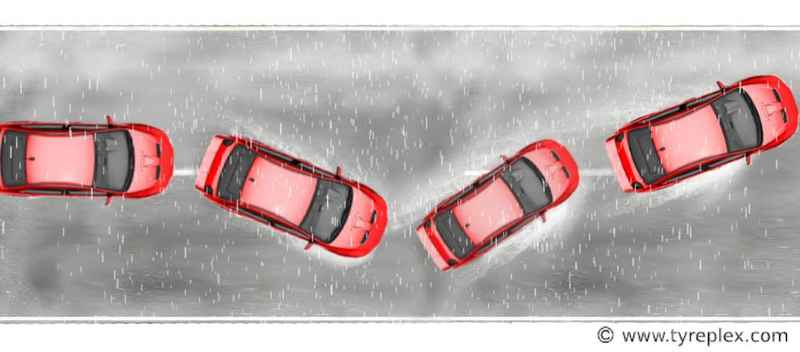- Construction of a wedge of water between surface and tyre is called Aquaplaning
- Wet surfaces increase the risk of Aquaplaning
- Tread depth and pattern helps to channel the water effectively
- A minimum tread depth of 3mm is recommended to avoid Aquaplaning

Indian roads are no less than swimming pools once the monsoon season arrives. Our country is unfortunately blessed with some of the worst public drainage systems in the world. In such circumstances, tyres that are worn out and do not have enough tread depth will be prone to a phenomenon known as aquaplaning.
Aquaplaning is a phenomenon that takes place when a tyre starts rolling above the surface of the road due to the presence of a layer of water between the tyre and the road surface. It usually takes place when a tyre is not able to scatter enough water from the front of the tyres and throw it at the back.
A major factor that increases the chances of aquaplaning is inadequate tread depth on your tyres. The grooves on the tyre tread are what help in channeling the water out from beneath the tyre and maintain contact with the road.
Is Aquaplaning Dangerous ?

Aquaplaning is characterized by poor braking and no steering responses due to a loss of traction and wheel stability. So yes, it is extremely dangerous and you must take steps to avoid it.
Also Read : Your Pocket Guide to Tyre Speed Ratings
How to prevent Aquaplaning?

- Speed- The most frequent cause of aquaplaning is high speed as a tyre rolling at very high speed doesn't get enough time to channel the water from the road. So it is important that you slow down and drive at a constant speed on wet surfaces to prevent aquaplaning.
- Tread depth- It is highly recommended to keep your tyre’s tread depth more than 3mm. Anything less than the recommended figure and you're bound for disaster. Many countries, in fact, have proper guidelines and laws for tyre safety and not following these can lead to hefty fines and penalties.
- Tread design- Tread design is important and every tread design serves a purpose. Some are more fuel-efficient while some are specifically designed for rainy conditions. There are proper rain tyres available in the market that you can utilize if you frequently face very wet roads.
- Air pressure- Over-inflated or under-inflated tyres, both, are not suitable for use in rains. It is recommended that you always keep the air pressure at the optimum level which is recommended by the manufacturer.
If you keep all the aforementioned conditions in check, you’ll rarely come across any traction loss from aquaplaning but what if despite your best efforts you still end up in a situation where your car loses traction and starts to skid and slide? Here is what you should do:
Let's say you lose control over your car, your brakes aren't working and the car isn't responding to the steering inputs. Then:
- The first step is not to panic, don't try to apply brakes or give excessive steering inputs.
- Take your foot off from the accelerator and start downshifting.
- Apply emergency brakes halfway as the rear tyres are less affected by aquaplaning. This will be the most effective way to get out from it and you should be able to regain control of your car.